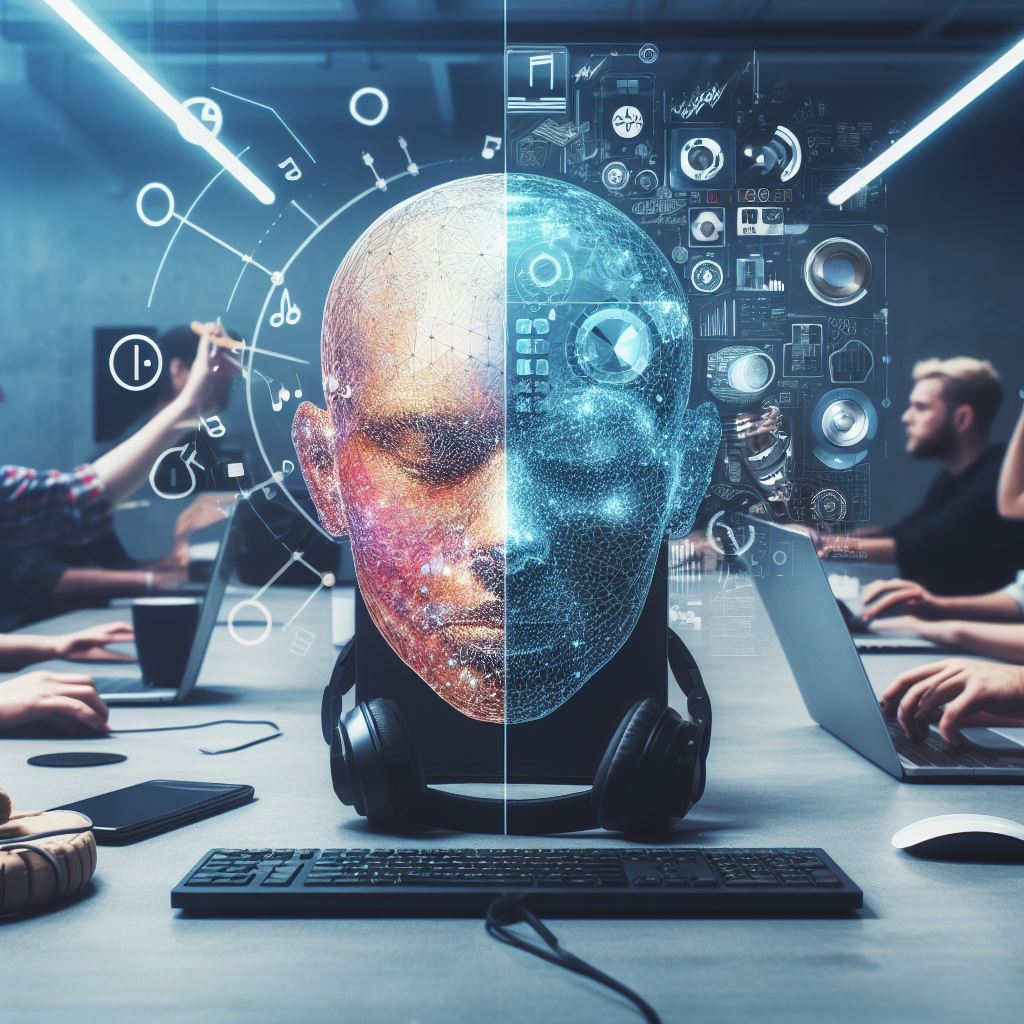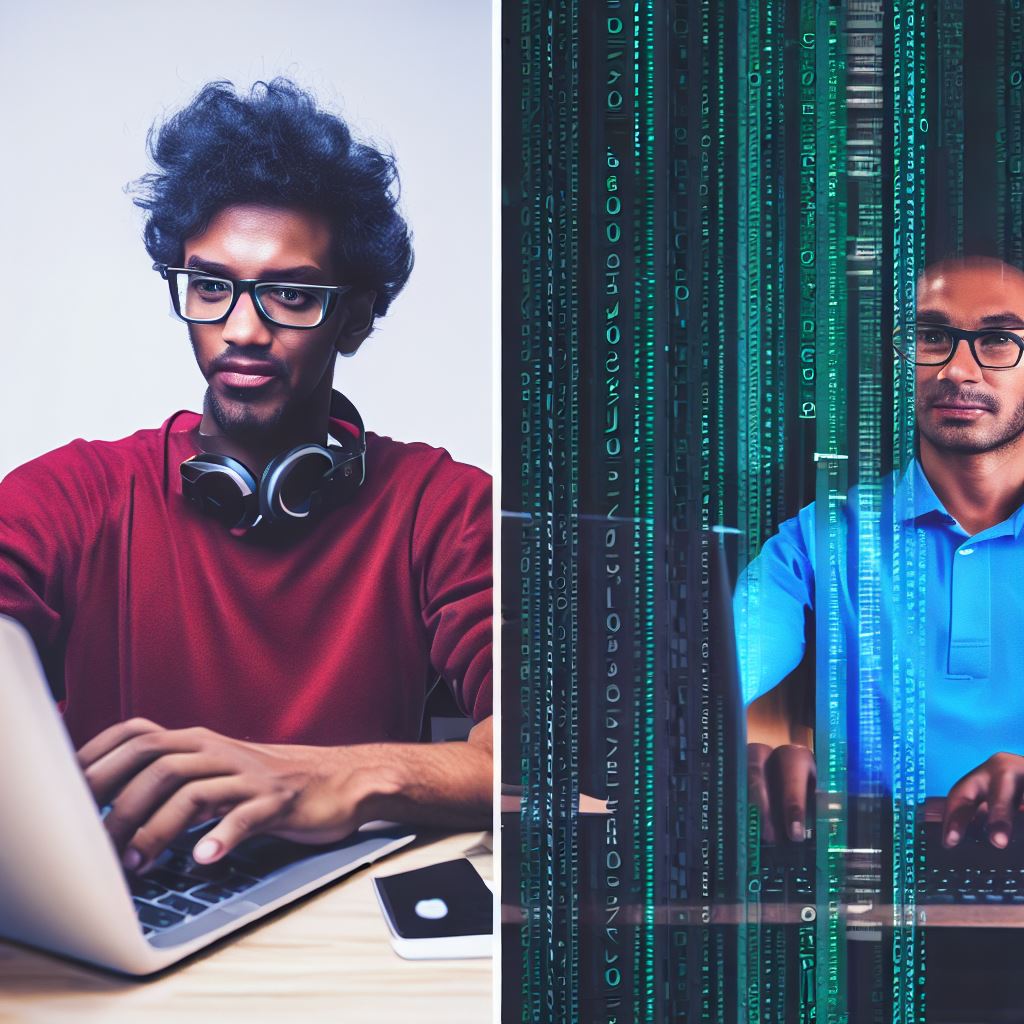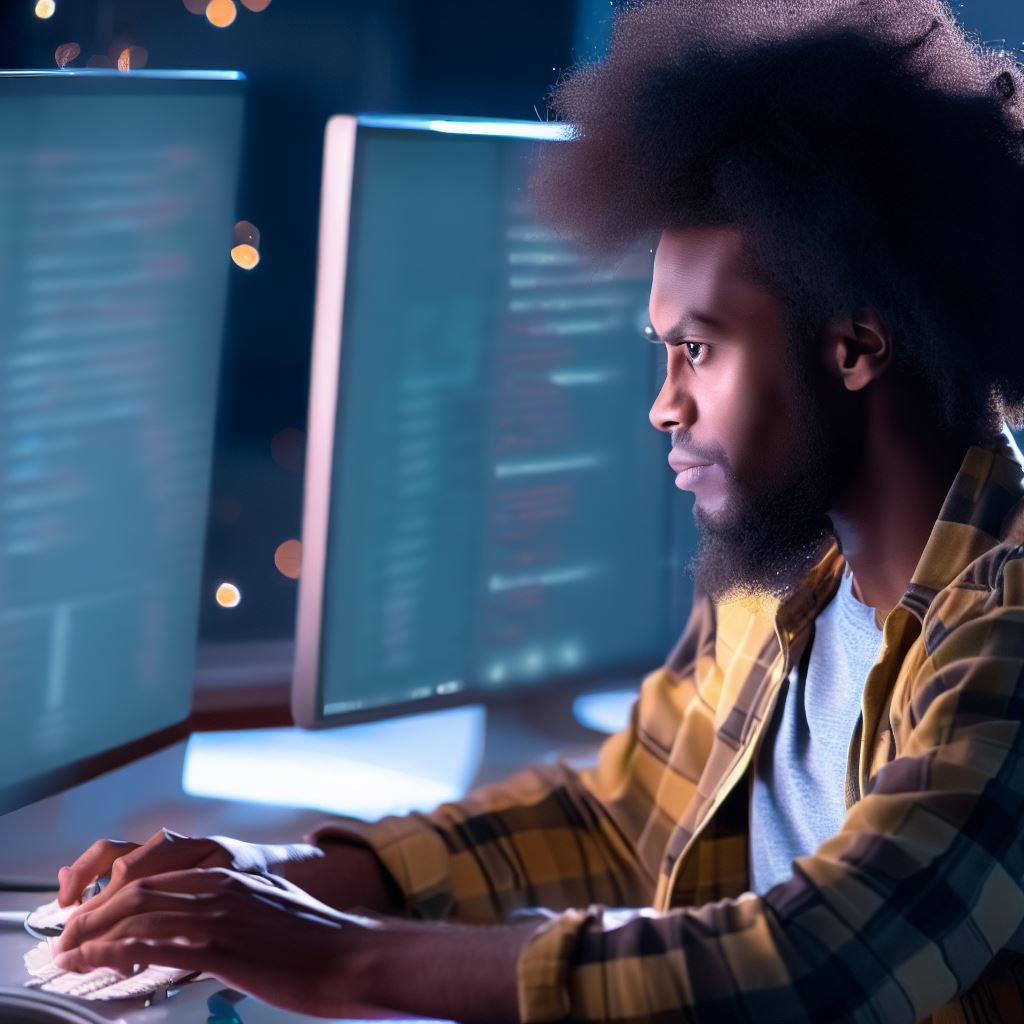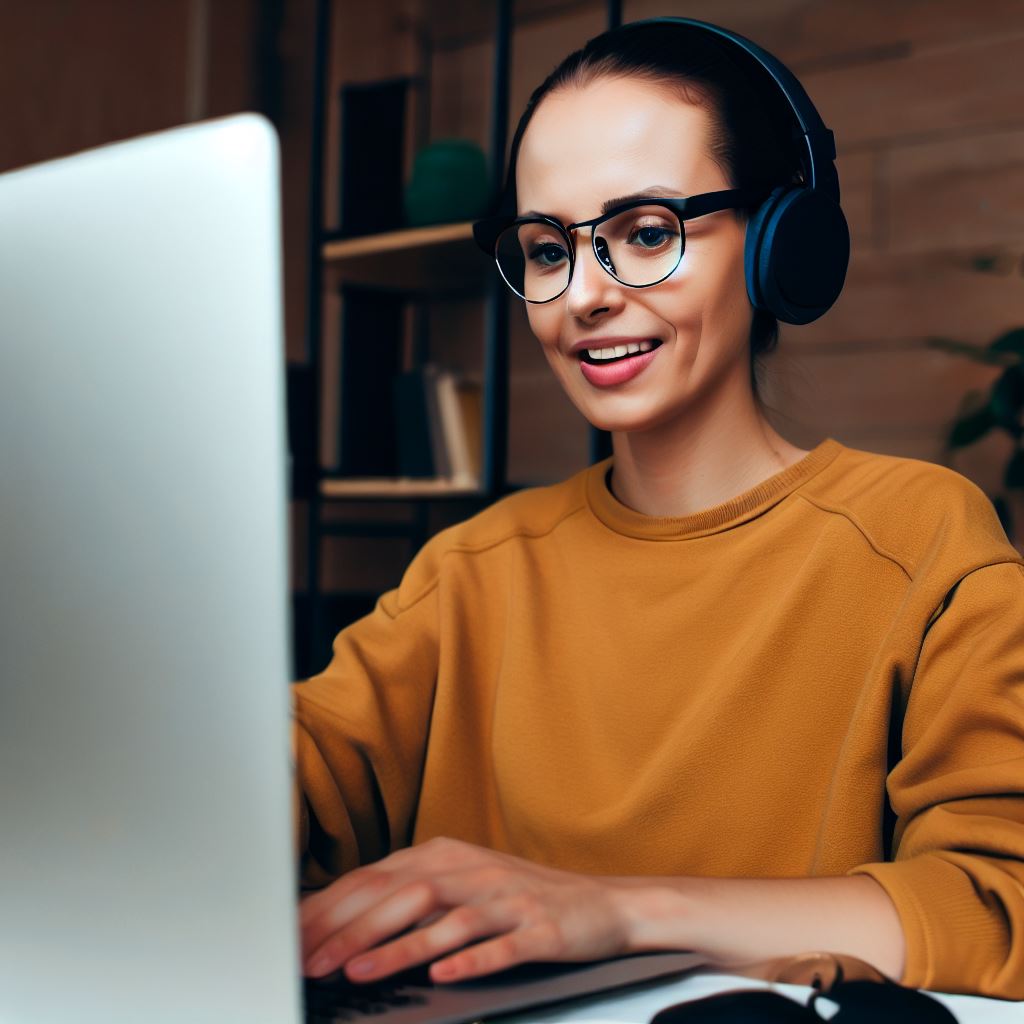Introduction
Music and code play crucial roles in modern America, influencing our daily lives in various ways.
This blog post will explore the significance of their integration and provide an overview of how they coexist harmoniously.
The connection between music and code has become increasingly vital in today’s society. Both fields have experienced significant advancements that have shaped our culture and technology.
It is essential to understand the impact this marriage has had on our lives. The integration of music and code has brought forth numerous benefits, such as enhancing the way we listen to and create music.
Code allows musicians to experiment with new sounds, create intricate compositions, and manipulate digital instruments to achieve unique melodies.
Moreover, code has revolutionized the way we consume music.
Streaming platforms and digital music libraries have become the norm, providing us with instant access to an extensive range of songs from various genres. This accessibility has expanded our musical horizons.
On the other hand, music has also influenced the world of code. As programming languages have become more complex, developers have sought inspiration from music theory to design algorithms and patterns.
This interdisciplinary approach has resulted in innovative solutions and improved user experiences. basically, music and code have become indistinguishably intertwined in modern America.
This blog post will delve deeper into the multitude of ways they have merged and transformed our lives, providing a comprehensive analysis of this unique fusion.
Stay tuned for an exciting journey into the marriage of music and code.
Music Industry Transformation
Evolution of the Music Industry
The music industry has undergone a profound transformation, shaped by relentless technological advancements.
New tools and digital platforms have revolutionized how artists create, distribute, and connect with their audience.
With the emergence of digital audio workstations, musicians now craft their melodies with unprecedented precision.
Online collaboration tools enable artists to collaborate seamlessly, regardless of their geographic locations.
Music production, once confined to recording studios, has spilled over into bedrooms and home studios.
The evolution has made music creation more accessible, empowering a new generation of independent artists.
Digitization and Streaming Platforms
Digitization paved the way for streaming platforms to become the lifeblood of the industry.
Services like Spotify, Apple Music, and Amazon Music have reshaped how people consume music.
Tech Consulting Tailored to Your Coding Journey
Get expert guidance in coding with a personalized consultation. Receive unique, actionable insights delivered in 1-3 business days.
Get StartedCode-driven algorithms curate playlists, tailoring music recommendations to individual tastes, enhancing user experiences.
The convenience of on-demand streaming has shifted consumer behavior, making physical music sales almost obsolete.
It’s now common for listeners to have a library of millions of songs at their fingertips.
Impact of Code in Music
Code plays a pivotal role in music’s distribution, promotion, and monetization.
Social media algorithms drive music discovery, allowing artists to reach global audiences.
E-commerce platforms facilitate merchandise sales, deepening artist-fan connections and revenue streams.
Smart contracts on blockchain technology provide transparent royalty payments, ensuring fair compensation for artists.
The marriage of music and code has democratized the industry, giving emerging artists a chance to shine.
In this digital age, music isn’t just an art form but a code-driven cultural phenomenon, continually evolving.
This transformation, driven by technology, has made music a more inclusive and thriving industry than ever before.
Creation of Music through Code
In modern America, the fusion of music and code has revolutionized how we create and experience music.
Technology has empowered musicians to incorporate code into their composition and production processes, resulting in unique, innovative pieces.
This post delves into the pivotal role of code in music creation, emphasizing its influence on aspects like melody, harmony, rhythm, and dynamics.
Musicians wield code to experiment with diverse musical elements, unleashing boundless creative potential.
Build Your Vision, Perfectly Tailored
Get a custom-built website or application that matches your vision and needs. Stand out from the crowd with a solution designed just for you—professional, scalable, and seamless.
Get StartedThis code-driven approach grants artists full control over their creative process.
Software and algorithms have emerged as indispensable tools, with Digital Audio Workstations enabling music composition, arrangement, and mixing.
Furthermore, algorithms inspire musical ideas, fueling creativity. Pioneering artists like Zach Lieberman, through Open Frameworks, explore code’s intersection with music and visual art.
Holly Herndon employs machine learning and vocal synthesis for experimental electronic music, exemplified in “PROTO.”
Collective movements, such as Algorave, unite musicians, visual artists, and coders for real-time algorithmic music creation, fostering collaboration and innovation.
The marriage of music and code in modern America reshapes music production and composition, empowering artists to push boundaries and craft unique musical experiences.
Software and algorithms remain formidable tools, with figures like Zach Lieberman and Holly Herndon demonstrating code’s transformative capabilities, inspiring a new generation of musicians.
As this symbiotic relationship evolves, we anticipate further innovations in musical expression.
Code in Live Performances
Live music performances captivate audiences, creating ambiance with talented musicians, melodious tunes, and enraptured crowds. Modern America introduces a novel dimension by fusing music and code.
Musicians embrace coding techniques, using languages like Max/MSP or Supercollider to manipulate electronic instruments and software, yielding unheard sounds.
This integration revolutionizes live music, enriching depth and immersion with a vast spectrum of sounds and effects.
It empowers musicians to explore unconventional creation methods through coding algorithms, generating melodies and rhythms unattainable with traditional instruments.
Electronic instruments and software are now vital in crafting distinctive auditory landscapes.
Code’s impact extends to the audience’s experience, enabling immersive audiovisual spectacles where visuals synchronize harmoniously with the music.
Optimize Your Profile, Get Noticed
Make your resume and LinkedIn stand out to employers with a profile that highlights your technical skills and project experience. Elevate your career with a polished and professional presence.
Get NoticedProjection mapping projects visuals onto surfaces, enhancing engagement and memorability.
Code allows dynamic interaction with the audience through sensors, gestures, and motion tracking.
The audience influences tempo and intensity through body movements and gestures.
In fact, the union of music and code transforms modern American music experiences, fostering novel sounds, unconventional methods, and immersive audiovisual spectacles.
Musicians elevate their craft, delivering dynamic, engaging, and memorable performances.
Read: The Top 10 Coding Schools in the USA for 2024
Music Education and Code
Incorporation of Code in Music Education Curricula
- Integrating code in music education curricula enhances students’ creative and technical skills.
- Schools are introducing coding as part of music courses to enable students to explore code-assisted music production.
- The inclusion of coding in music education empowers students to become multi-dimensional musicians.
- Students are taught to use coding platforms to compose, remix, and manipulate music digitally.
- Incorporating code in music education helps students understand the intricate relationship between music and technology.
Introduction to Coding as a Tool for Music Creation
- Introducing coding in music education provides students with a modern and relevant approach to music.
- Students are introduced to coding languages like Python, JavaScript, and Max/MSP for music composition.
- Coding enables students to create complex sound structures and experiment with different musical elements.
- Students use code to customize synthesizers, create unique sound effects, and develop interactive music interfaces.
- The integration of coding as a tool for music creation broadens students’ perspectives on music composition.
Benefits and Challenges of Blending Music and Coding in Educational Settings
- The blending of music and coding enhances students’ problem-solving, critical thinking, and computational skills.
- Students learn to collaborate, share, and build upon each other’s code-driven musical creations.
- Blending music and coding cultivates innovation and pushes the boundaries of conventional music production.
- However, the challenge lies in the availability of knowledgeable music educators who are familiar with coding.
- Music education institutions must invest in resources, training, and infrastructure to support code integration.
- The process of learning both music and coding can be demanding, requiring dedication and continuous practice.
- Students must overcome the learning curve of coding in addition to their musical development.
- Despite the challenges, the benefits of synergizing music and coding in education outweigh the obstacles.
Therefore, the incorporation of code in music education curricula offers a revolutionary approach to music learning and creation.
By introducing coding as a tool for music composition, students can explore new dimensions of musicality and develop technical skills.
The integration of coding fosters innovation, collaboration, and critical thinking.
However, educational institutions must address the challenges of preparing music educators and providing adequate resources for code integration.
Despite these obstacles, the marriage of music and code in educational settings has the potential to shape the future of music production and nurture a new generation of musicians who can thrive in the digital age.
Read: Medical Coding for Pediatrics: Special Considerations to Note

Collaborations between Musicians and Coders
Collaborations between musicians and coders have been on the rise in modern America, resulting in innovative projects that fuse music and technology.
Increasing collaborations between musicians and coders
- Artists and programmers are joining forces to explore the intersection between music and code.
- The advent of digital technology has made it easier for musicians and coders to collaborate.
- Musicians are recognizing the potential of coding to enhance their creative processes.
- Programmers are intrigued by the possibilities of using music as a medium for their coding projects.
- The growing popularity of electronic music has sparked interest in collaborations between musicians and coders.
Fusion of music and technology in innovative projects
- Musicians and coders are creating interactive installations that combine music with computer-generated visuals.
- Coders are developing software and algorithms that enable musicians to manipulate sounds in real-time performances.
- Virtual reality and augmented reality technologies are being integrated into musical experiences through collaboration between musicians and coders.
- Mobile applications are being designed to enhance the audience’s engagement during live performances.
- Machine learning and artificial intelligence are being utilized to generate new compositions and sounds.
Examples of successful collaborations and their impact on both industries
- The collaboration between Björk and a team of programmers resulted in a groundbreaking virtual reality music video.
- Music festivals like Moogfest and Sónar facilitate collaborations between musicians and coders, showcasing the fusion of music and technology.
- Codarts, a music and dance academy, offers courses where musicians and coders collaborate to create innovative performances.
- Open-source platforms such as Arduino and Raspberry Pi have enabled musicians and coders to create affordable and accessible interactive music projects.
- These collaborations have not only pushed the boundaries of music and code but have also opened up new career opportunities for artists and programmers.
Therefore, the marriage of music and code in modern America is witnessing an increasing number of collaborations between musicians and coders.
The fusion of music and technology in innovative projects has resulted in groundbreaking experiences for both industries.
Examples of successful collaborations highlight the impact these partnerships have on pushing the boundaries of creativity and creating new career opportunities.
As technology continues to advance, we can expect even more exciting collaborations that redefine the landscape of music and code.
Read: Specialty Coding: An Overview and How-to Guide
Ethical and Legal Implications
Copyright Challenges in the Digital Age
Copyright battles intensify as music intertwines with code. Digital sampling and remixing blur the lines.
Tech giants like Google face lawsuits over unauthorized music use on platforms. Labels fight against piracy while protecting artists.
Creators, too, face a dilemma. How much of their work is original, and how much is algorithmic?
Ownership of Code-Generated Music
Ownership gets murky when AI generates music. Who owns a tune composed by an algorithm, the coder, or AI?
Contracts must specify terms clearly to avoid future disputes between artists, developers, and record labels.
Protecting Intellectual Property
Challenges emerge in safeguarding intellectual property and creative works in the digital music era.
Monitoring code-generated compositions for plagiarism becomes complex, requiring innovative solutions.
The law is evolving but struggles to keep pace with technology. Courts grapple with defining rights in this digital symphony.
In this era where music and code marry, addressing these ethical and legal challenges remains critical.
Future of Music and Code
As the marriage of music and code continues to flourish, it is evident that further integration and advancements are on the horizon.
The future holds exciting possibilities for this union, with potential areas for growth and exploration, as well as benefits and risks to consider.
Predictions on Further Integration and Advancements
- Artificial Intelligence (AI) will play a significant role in the future of music and code integration. AI algorithms will be able to compose music based on specific coding instructions and musical styles.
- Virtual Reality (VR) and Augmented Reality (AR) will revolutionize the way we experience music. Immersive virtual concerts and interactive music experiences will be created with the help of code.
- Blockchain technology could revolutionize the music industry by ensuring fair compensation for artists. Smart contracts powered by code could automate royalty payments and eliminate intermediaries.
Potential Areas for Growth and Exploration in the Marriage of Music and Code
- Interactive music creation: Code could enable musicians and composers to create dynamic music pieces that change based on user input or environmental factors.
This could enhance interactive performances and create unique experiences for the audience. - Music and gaming collaborations: The gaming industry is constantly evolving, and music plays a vital role in creating immersive experiences.
Further integration of music and code can lead to innovative soundtracks and interactive gaming experiences. - Music education: Code can be used to create engaging platforms for music education, making it more accessible and interactive.
Virtual classrooms, interactive tutorials, and personalized learning experiences can revolutionize the way music is taught and learned.
Benefits and Risks of Continued Integration
Benefits
- Innovation: The integration of music and code opens up a realm of innovative possibilities, allowing artists to experiment and push boundaries.
- Efficiency: Code can automate repetitive tasks, such as music production and distribution, allowing artists to focus on creativity.
- Accessible music creation: Code enables more people to create music, even without traditional instrumental skills. This inclusivity can lead to the discovery of unique talents and diverse music styles.
Risks
- Dependency on technology: An overreliance on code and technology could lead to a loss of human touch and emotion in music creation.
- Copyright and ownership issues: With increased use of code in music creation, concerns regarding copyright infringement and ownership may arise.
- Lack of authenticity: The ease of creating music with code could lead to an oversaturation of generic music, making it harder for original and unique voices to stand out.
In general, the future of music and code holds immense potential for growth and exploration.
Advancements in AI, VR, and blockchain technology will further integrate these two disciplines, creating new opportunities for musicians, composers, and audiences alike.
While the benefits of continued integration are vast, it is important to navigate the risks and ensure the preservation of authenticity and human expression in this evolving landscape.
Read: The Impact of Telehealth on Medical Coding Practices
Conclusion
The marriage of music and code holds significant importance in modern America. By merging these two art forms, new and exciting possibilities are created.
It is fascinating to witness how this field is constantly evolving and pushing boundaries. We encourage readers to explore this innovative and dynamic intersection.
Discover the profound impact of the union between music and code in modern America:
- Innovation in Sound: Code transforms how music is created, blending genres and sparking innovation.
- Accessibility: Code democratizes music production, empowering artists to create from anywhere with digital tools.
- Interactive Experiences: Virtual reality concerts and interactive music apps redefine audience engagement.
- Data-Driven Insights: Code analyzes listener preferences, shaping personalized music recommendations and curated playlists.
- Tech-Powered Composition: AI algorithms assist composers, pushing the boundaries of creativity.
- Streaming Revolution: Code facilitates the rise of streaming platforms, revolutionizing music distribution and consumption.
Finally, the marriage of music and code opens doors to uncharted creative territories. Dive into this dynamic realm, explore its possibilities, and contribute to the evolving landscape.
The future of music in America is both digital and harmonious.




